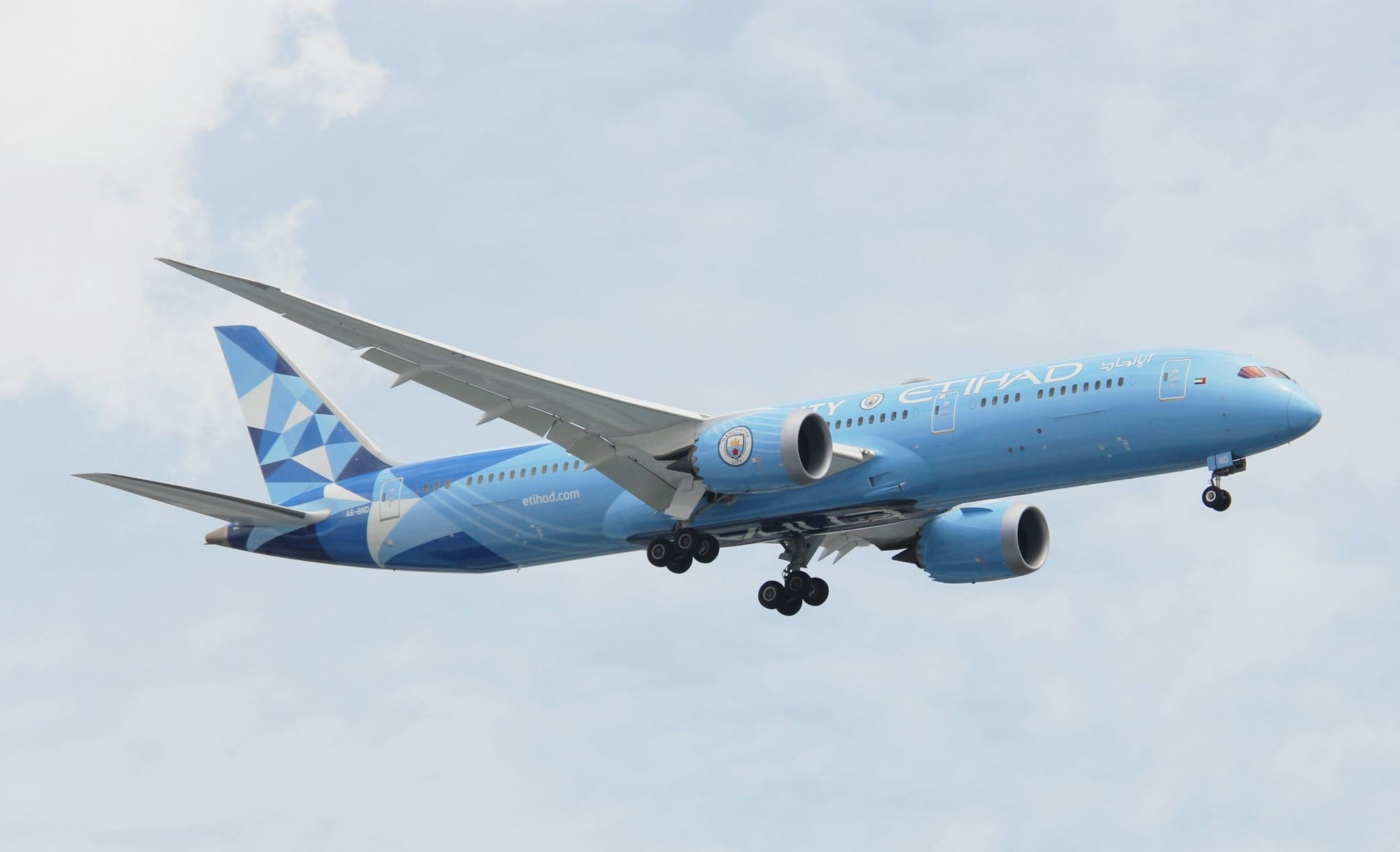Air Traffic Rights: The Seventh Freedom of the Air Explained
The Freedoms of the Air are a set of commercial aviation rights that grant airlines the privilege to enter and land in another country's airspace. These freedoms were established by the Chicago Convention of 1944, which laid the groundwork for international air travel.

Air Traffic Rights: The Seventh Freedom of the Air Explained
Key Takeaways
- The Seventh Freedom of the Air allows airlines to operate flights between two foreign countries without returning to their home country.
- This freedom enhances global connectivity and offers significant economic benefits to airlines and countries.
- Understanding the Seventh Freedom is crucial for stakeholders in the aviation industry, including policymakers, airlines, and passengers.
Introduction to the Freedoms of the Air
The Freedoms of the Air are a set of commercial aviation rights that grant airlines the privilege to enter and land in another country's airspace. These freedoms were established by the Chicago Convention of 1944, which laid the groundwork for international air travel. There are nine freedoms in total, each with its own specific rights and implications for airlines and countries.
The Seventh Freedom of the Air is one of the most significant yet least understood of these rights. It allows an airline to operate flights between two foreign countries without the need to return to its home country. This freedom has far-reaching implications for global aviation, influencing everything from route planning to international trade.
Historical Context of the Seventh Freedom
The concept of the Seventh Freedom emerged in the mid-20th century as international air travel began to expand. Initially, most countries were hesitant to grant such extensive rights to foreign airlines, fearing it would undermine their own national carriers. However, as globalization accelerated, the need for more flexible air travel options became apparent.
The Seventh Freedom was formally recognized in various bilateral and multilateral air service agreements. These agreements allowed airlines to operate more efficiently and offer passengers greater connectivity. Over time, the Seventh Freedom has become a crucial component of the global aviation landscape, enabling airlines to optimize their operations and better serve international markets.
Economic Implications
The Seventh Freedom offers significant economic benefits to both airlines and countries. For airlines, it provides the opportunity to tap into new markets and increase their revenue streams. By operating flights between two foreign countries, airlines can optimize their fleet utilization and reduce operational costs.
For countries, the Seventh Freedom can stimulate economic growth by enhancing connectivity and attracting tourism and business travel. Increased air traffic can lead to job creation in sectors such as hospitality, retail, and transportation. Moreover, improved air connectivity can facilitate international trade, making it easier for businesses to access global markets.
Case Study: European Union
The European Union (EU) is a prime example of how the Seventh Freedom can be effectively implemented. Within the EU, airlines from member states enjoy extensive Seventh Freedom rights, allowing them to operate flights between any two EU countries without restrictions. This has led to a highly competitive and dynamic aviation market.
Low-cost carriers like Ryanair and EasyJet have capitalized on these freedoms to expand their networks and offer affordable travel options to millions of passengers. The liberalization of air travel within the EU has not only benefited airlines but also contributed to economic growth and increased mobility for European citizens.
Regulatory Framework
The regulatory framework governing the Seventh Freedom varies from one region to another. In most cases, these rights are granted through bilateral or multilateral air service agreements. These agreements outline the terms and conditions under which airlines can operate flights between foreign countries.
In some regions, such as the EU, the Seventh Freedom is enshrined in regional aviation policies. In other cases, countries may negotiate specific agreements to grant these rights on a reciprocal basis. Understanding the regulatory landscape is essential for airlines seeking to leverage the Seventh Freedom to expand their operations.
Challenges and Limitations
Despite its benefits, the Seventh Freedom is not without challenges. One of the primary obstacles is the reluctance of some countries to grant these rights to foreign airlines. Concerns about protecting national carriers and maintaining control over airspace can lead to restrictive policies.
Additionally, operational challenges such as slot availability, airport capacity, and regulatory compliance can complicate the implementation of the Seventh Freedom. Airlines must navigate these hurdles to fully capitalize on the opportunities presented by this freedom.
Technological Advancements
Technological advancements have played a crucial role in facilitating the Seventh Freedom. Modern aircraft with extended range capabilities and improved fuel efficiency make it feasible for airlines to operate long-haul flights between foreign countries. Innovations in air traffic management and digital connectivity also enhance operational efficiency.
For example, the advent of next-generation aircraft like the Boeing 787 and Airbus A350 has enabled airlines to launch new routes that were previously unviable. These technological advancements have made it easier for airlines to explore new markets and offer passengers more travel options.
Environmental Considerations
The environmental impact of the Seventh Freedom is an important consideration for airlines and policymakers. Increased air traffic can lead to higher carbon emissions, contributing to climate change. Airlines must adopt sustainable practices to mitigate their environmental footprint.
Many airlines are investing in more fuel-efficient aircraft and exploring alternative fuels to reduce emissions. Additionally, regulatory bodies are implementing measures such as carbon offset programs and emissions trading schemes to promote sustainability in the aviation industry.
Future Prospects
The future of the Seventh Freedom looks promising, with increasing globalization and technological advancements driving demand for more flexible air travel options. As countries recognize the economic benefits of enhanced connectivity, more are likely to grant these rights to foreign airlines.
Emerging markets in Asia, Africa, and Latin America present significant growth opportunities for airlines leveraging the Seventh Freedom. By expanding their networks and offering more direct flights, airlines can tap into these burgeoning markets and cater to the growing demand for international travel.
Conclusion
The Seventh Freedom of the Air is a pivotal component of international aviation, offering airlines the flexibility to operate flights between foreign countries without returning to their home base. This freedom enhances global connectivity, stimulates economic growth, and presents new opportunities for airlines and countries alike. Understanding the intricacies of the Seventh Freedom is essential for stakeholders in the aviation industry, as it shapes the future of air travel and international trade.
Summary
The Seventh Freedom of the Air allows airlines to operate flights between two foreign countries without returning to their home country. This freedom enhances global connectivity and offers significant economic benefits to airlines and countries. Understanding the Seventh Freedom is crucial for stakeholders in the aviation industry, including policymakers, airlines, and passengers. The regulatory framework, technological advancements, and environmental considerations all play a role in shaping the implementation and future prospects of this freedom.
FAQ
What is the Seventh Freedom of the Air? The Seventh Freedom of the Air allows an airline to operate flights between two foreign countries without the need to return to its home country. This freedom is part of a set of commercial aviation rights established by the Chicago Convention of 1944.
How does the Seventh Freedom benefit airlines? The Seventh Freedom provides airlines with the opportunity to tap into new markets, optimize fleet utilization, and reduce operational costs. It also enhances global connectivity, allowing airlines to offer more direct flights and better serve international markets.
What are the challenges associated with the Seventh Freedom? Challenges include reluctance from some countries to grant these rights, operational hurdles such as slot availability and airport capacity, and regulatory compliance. Airlines must navigate these challenges to fully capitalize on the opportunities presented by the Seventh Freedom.







